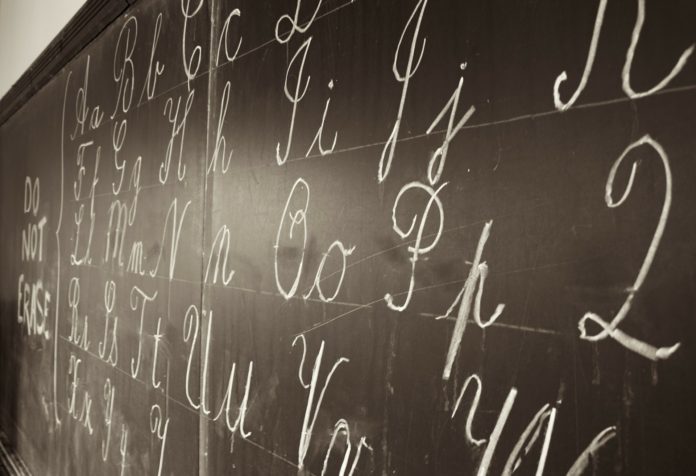In this digital age, kids are getting so tech savvy that it can seem pointless to teach them how to write by hand when they could just type to get legible results every time. After all, it stands to reason that the focus should be on content instead of on penmanship, and so cursive handwriting skills are increasingly being phased out of the mandatory curriculum in Canadian schools. But is that costing young students full literacy?
Handwriting is essential to early literacy
Most studies tend to focus on the reading and comprehension side of literacy. However, the writing side is equally important. It requires the writer to retrieve and spell vocabulary; practicing cursive writing helps build fluency by making this retrieval automatic so that writers can focus on their organizing their ideas.
In a worrying trend, 40 percent of Alberta’s Grade 3 students achieve standards of excellence in reading, but only 15 percent of them manage to achieve equivalent standards for writing. Even early spontaneous readers may struggle to make the leap to writing.
Fast and fluent handwriting frees up focus on ideas
Our bodies and minds are linked, and what happens in our brains when we tap a letter on a keyboard isn’t the same as when we trace out a letter with pen and paper.
Writing letters on paper requires the combination of several sensorimotor processes, and the movement influences cognition. When students practice handwriting, they are also practicing hand-eye coordination and the neuromotor control that gives them the dexterity and grip they need to control a pencil. To fit the letters properly and neatly in their notebooks, they are conceptualizing size, shape, and space. This focus of the body and mind helps them study and memorize the symbols, their patterns, and their meaning.
Roessingh also notes that exercise and play factors into literacy and handwriting skills. When children climb trees, or fold paper airplanes, or draw and colour, they are building the fine motor skills that help them write.
When students master handwriting, the muscle memory helps them form text just like how drills help athletes with sport, or scales help musicians play their instruments. Once it feels automatic, writers are free to focus on expression, planning, and organization.
Better penmanship means better writing
To test this link, Roessingh and three other Grade 2 teachers tested students at a school for gifted children. They gave their students a topic: to suggest how the school could promote habits for healthier lifestyles among young students. They brainstormed together as a group before each student was asked to draw their suggestions as a pre-writing strategy to help organize their ideas. They were then asked to write their ideas down. After an hour, the assignments were collected.
The writing samples were scored on a 4-point scale (limited, satisfactory, proficient, or excellent) and the quality of their printing was also scored based on shape, size, and spacing (laboured, legible, controlled, or fluent). The assessment also looked for spelling errors, the number of total and unique words, and the complexity of the vocabulary used.
Students who had fluent handwriting skills wrote longer passages with more complex word choices and fewer spelling errors. Despite the majority of students tested scoring in the 90th percentile on the Expressive One Word Picture Vocabulary Test, those with laboured handwriting skills had trouble retrieving complex vocabulary for the assignment.
Targeted daily lessons on printing (20 minutes a day for 10 weeks) helped students improve their writing speed so that they could better keep up with their thoughts. Their spelling improved, but they were also more open to risk taking in selecting words they didn’t know how to spell.
The teachers also noted that pre-writing activities like drawing, brainstorming and webbing, or preparing an outline consistently helped students produce better written passages. They note that drawing activities are often reserved for after a writing activity is complete, as a bit of a reward if time permits. They recommend reversing this timing so students can take full advantage of the benefits.
Handwriting helps young writers get their ideas on paper. Without automatic handwriting skills, the transition from thoughts to print hinders them from creating thoughtful content. Keyboarding skills are sure to follow, but the foundations of literacy start with a pencil and paper.








































